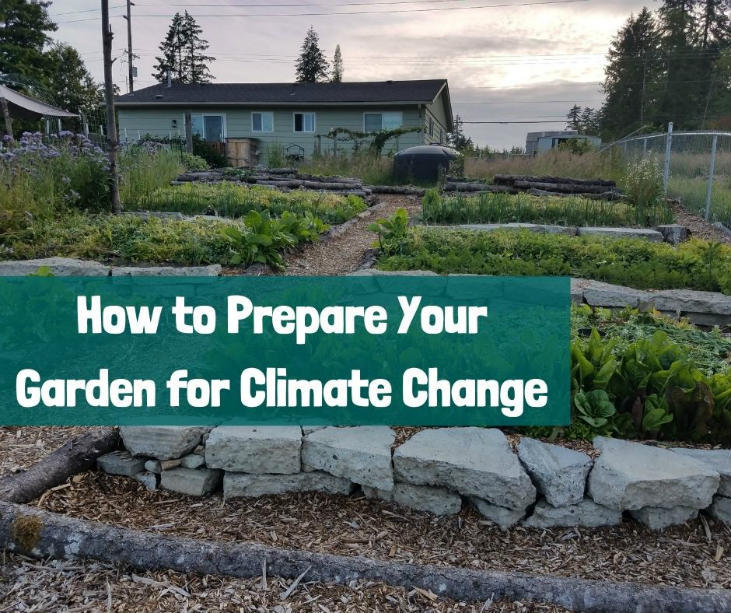Embracing Green Practices: Navigating Climate Change in Gardening
Date: 22 Dec 2023
Climate change poses a profound challenge to the world's ecosystems, and its impact on gardening practices cannot be overstated. As temperatures shift, weather patterns become erratic, and carbon dioxide levels rise, the world of gardening faces a new set of challenges and opportunities. In this comprehensive guide, we'll delve into the intricate relationship between climate change and gardening, exploring its effects on plant life, the mechanics of the greenhouse effect within gardens, and the consequential impact on photosynthesis.
How Can We Respond to Climate Change in Gardens?
Climate change demands a proactive response from gardeners. Implementing sustainable practices is crucial. From water conservation strategies to embracing native plant species resilient to local climate shifts, gardeners can significantly contribute to environmental preservation. Rainwater harvesting, composting, and adopting organic gardening methods are integral steps toward mitigating the effects of climate change.
Will Climate Change Affect Plants?
Undoubtedly, climate change has profound implications for plant life. Shifts in temperature and precipitation patterns can disrupt plant growth cycles, alter flowering times, and impact pollination. Some plant species may face challenges due to changing habitats, while invasive species might thrive in newly favorable conditions. Understanding these dynamics is vital for gardeners aiming to adapt their practices.
Understanding the Greenhouse Effect in Gardening
In gardening, the greenhouse effect operates on a micro-level, impacting plant growth within confined spaces. Enclosed structures, such as greenhouses, utilize this effect intentionally to create favorable growing conditions. However, the broader implications of this effect in outdoor gardens amid climate change need careful consideration. Balancing heat retention and adequate ventilation becomes critical in maintaining optimal growing conditions.
The Impact of Climate Change on Photosynthesis
Photosynthesis, the lifeblood of plants, faces disruption due to climate change. Increased temperatures, altered rainfall patterns, and rising carbon dioxide levels affect this fundamental process. Understanding these effects is pivotal as they influence plant health, yield, and overall ecosystem dynamics.
Adapting Gardens to Climate Change
Gardeners must adapt their practices to the changing climate. One approach involves selecting plant varieties better suited to new climate conditions. Drought-resistant plants and those tolerant of temperature fluctuations become essential choices. Additionally, employing mulching techniques and efficient irrigation systems helps retain moisture and conserve water, crucial in arid or changing climates.
Effects of Climate Change on Plant Life
The impact of climate change on plants extends beyond growth patterns. It affects plant diseases, pests, and overall ecosystem dynamics. Pests that were once confined to specific regions might expand their range due to milder winters, posing new challenges for gardeners. Furthermore, increased incidences of extreme weather events, like storms and heatwaves, can directly damage plant health.
Greenhouse Effect in Garden Design
Understanding the principles of the greenhouse effect within garden design allows gardeners to create optimal growing conditions. Properly designed structures can regulate temperature and humidity, fostering healthy plant growth. However, balancing this effect becomes crucial in preventing overheating and ensuring adequate airflow within enclosed spaces.
Photosynthesis and Climate Change: A Complex Relationship
Photosynthesis, the process by which plants convert light into energy, is sensitive to environmental changes. Elevated temperatures can affect enzymes critical for photosynthesis, reducing its efficiency. Additionally, altered precipitation patterns influence water availability, directly impacting this essential process. Such disruptions can lead to reduced crop yields and affect food security.
Mitigating Climate Change Impact Through Sustainable Gardening Practices
Gardeners play a pivotal role in combating climate change through sustainable practices. Utilizing organic fertilizers, minimizing pesticide use, and promoting biodiversity contribute to healthier ecosystems. Creating wildlife-friendly habitats within gardens fosters balance and resilience in the face of changing environmental conditions.
Community Engagement and Education
Empowering communities with knowledge about climate-resilient gardening practices is paramount. Workshops, educational events, and community gardens serve as platforms to share expertise and promote sustainable gardening approaches. Encouraging collective action strengthens the impact and fosters a culture of environmental stewardship.
The Role of Soil Health in Climate-Resilient Gardens
Soil health is the bedrock of a successful garden, especially in the face of climate change. Healthy soils with robust microbial life and good structure retain water more efficiently, crucial in times of drought or irregular rainfall. Practices like no-till gardening and cover cropping improve soil structure, enhance water retention, and sequester carbon, contributing to climate mitigation efforts.
Microclimates and Their Significance
Understanding microclimates within a garden landscape is pivotal. Various areas within a garden might experience unique temperature and moisture conditions due to factors like topography, proximity to structures, or vegetation cover. Leveraging this knowledge allows gardeners to strategically place plants, optimizing their growth by capitalizing on these microclimates.
Innovative Technologies in Climate-Resilient Gardening
Advancements in technology offer tools to aid gardeners in adapting to climate change. Smart irrigation systems, weather-monitoring devices, and precision agriculture techniques help optimize resource use. Furthermore, genetic research into developing more resilient plant varieties provides hope for future gardening practices in a changing climate.
Local Adaptations and Indigenous Knowledge
Incorporating indigenous knowledge and local adaptations into gardening practices fosters resilience. Indigenous plant varieties often have natural adaptations to local climates, making them inherently more resilient. Collaborating with local communities and learning from their traditional gardening methods can offer invaluable insights for sustainable practices.
Economic and Social Impacts on Gardeners
Climate change in gardening isn't just about plants; it also affects the livelihoods of gardeners. Unpredictable weather patterns, crop failures, and increased pest pressures can impact the economic viability of gardening ventures. Addressing these challenges requires not only individual action but also supportive policies and collective efforts.
Promoting Climate-Resilient Landscapes
Beyond individual gardens, creating climate-resilient landscapes on a larger scale is crucial. Urban planners, landscape architects, and policymakers play vital roles in designing green spaces that mitigate climate effects. Incorporating green infrastructure, such as urban forests and permeable surfaces, helps manage water, reduce heat islands, and support biodiversity.

